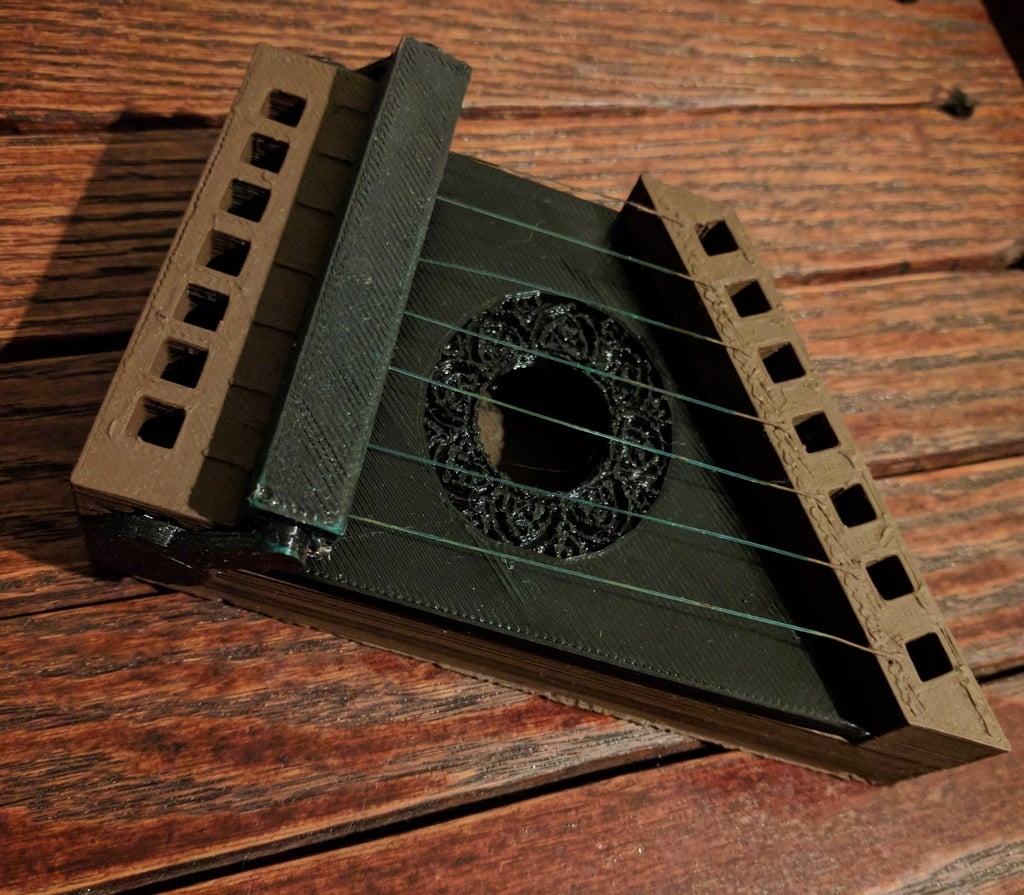
Fully 3D Printed Harp/Zither
thingiverse
Human: Please consider subscribing to my YouTube channel to explore immersive VR/360 tours of video game maps: https://youtube.com/mintyfries DISCLAIMERS: - This project is still a proof of concept and not yet refined. - The soundboard will likely break with rough handling due to its fragile nature. - I designed it for a 5-inch printer, but ideally it should be re-printed with a larger bed for better results. - The holes are meant for attaching real strings (not PLA) using pins, allowing for more authentic tones. - I've only tested this with PLA, and I'm unsure how it would perform with other materials like ABS. - This is an ongoing work in progress, and several improvements can already be envisioned (such as thinner walls). - Please note that this design has many areas where improvements could be made. This 100% 3D printed harp instrument consists of a single print body with strings integrated. After printing, you simply need to glue on the soundboard and assemble the crimping mechanism to keep the strings taut. The crimping mechanism attaches via pressure, but you will need to glue together the gears and tuning bar separately. Once assembled, attach the crimping mechanism and begin playing (just be gentle so the strings last longer). I enjoy crafting musical instruments and often experiment with various materials to discover their unique properties. One day, while changing filament, my printer started producing long, thin strands of PLA. I decided to test its sound-producing capabilities by stretching it across a cardboard box. To my surprise, it worked! The string could be plucked and produced a decent tone, although it didn't last very long before breaking. Inspired by this discovery, I set out to design and print small prototype harps, experimenting with the right dimensions for printing suspended strings across a gap. Since I wanted the strings to be integrated into the soundbox without needing glue, I opted for a crimping mechanism instead of standard tuning pins. Don't bother asking me about the tuning for this harp, as it would be futile to attempt to find a suitable frequency. The PLA simply won't respond like more suitable materials (like high-carbon steel) and the strings are too small, producing an unpleasantly high pitch. The crimping mechanism only serves to tighten the strings, not tune them. I wonder if it's possible to print suspended strings and then add additional layers to make them thicker, but I doubt it and haven't tested it yet. This project is primarily a fun proof of concept or decorative piece, so please don't expect a high-quality instrument from this print. It would be better to print a base and attach real strings instead of using plastic. I'd love for others to take this concept and run with it, experimenting with PLA strings and pushing the boundaries of what's possible with 3D printing.
With this file you will be able to print Fully 3D Printed Harp/Zither with your 3D printer. Click on the button and save the file on your computer to work, edit or customize your design. You can also find more 3D designs for printers on Fully 3D Printed Harp/Zither.
